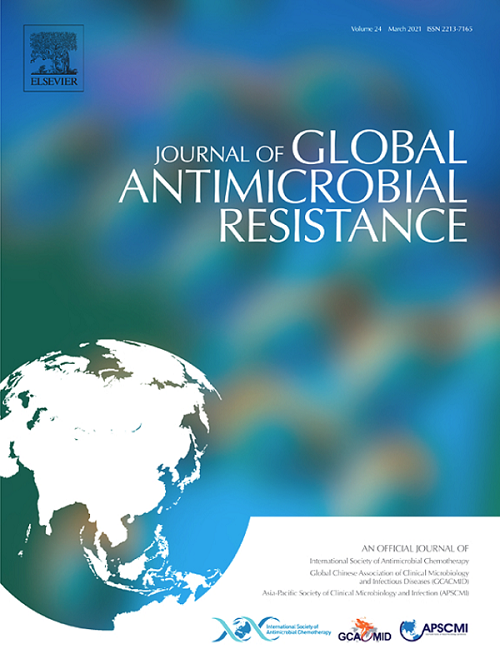Real-world performance in therapeutic target attainment of various recommended polymyxin B dose regimens: Secondary data analysis of a prospective multicenter cohort
IF 3.7
3区 医学
Q2 INFECTIOUS DISEASES
引用次数: 0
Abstract
Background
Various population pharmacokinetic studies have suggested controversial optimal dosing regimens for polymyxin B in recent years. The objective of this study was to examine the real-world performance of various dosing regimens in therapeutic target attainment.
Methods
This is a secondary analysis of a large prospective multicenter cohort (ChiCTR2200056667). Patients were retrospectively included from the cohort, and patient demographic characteristics, polymyxin B dosing regimens and corresponding 24-hour areas under the curve (AUCs) were collected. Patients were categorized into various groups according to the dosage regimens, and the corresponding AUC target attainment was analyzed. The target AUC ratio was defined as 50–100 mg/L·h.
Results
A total of 304 AUC data from 247 patients were included in this study. Only 55.3% of the AUCs were in the range of 50–100 mg/L·h. Differences in subgroups stratified by fixed-dosing regimens, weight-based regimens, and renal function-based dosing regimens. Moreover, the differences among the highest target dose strategies (fixed dose of 50 mg/12 h, weight-adjusted dose of 1–1.25 mg/kg/12 h, and CRRT unadjusted dose) were also insignificant.
Conclusion
No polymyxin B dosing strategy is superior in terms of target attainment, which highlights the importance of TDM in the clinical application of polymyxin B.
多种推荐的多粘菌素B剂量方案在达到治疗目标方面的实际表现:一项前瞻性多中心队列的二次数据分析。
背景:近年来,各种人群药代动力学研究提出了有争议的多粘菌素B的最佳给药方案。本研究的目的是检验各种给药方案在治疗目标实现方面的实际表现。方法:这是一项大型前瞻性多中心队列(ChiCTR2200056667)的二次分析。回顾性地从队列中纳入患者,收集患者人口统计学特征、多粘菌素B给药方案和相应的24小时曲线下面积(auc)。根据给药方案将患者分为不同的组,并分析相应的AUC目标达到情况。目标AUC比值定义为50-100 mg/L∙h。结果:本研究共纳入247例患者的304例AUC数据。只有55.3%的auc在50 ~ 100 mg/L∙h范围内。按固定给药方案、基于体重的给药方案和基于肾功能的给药方案分层的亚组差异。此外,最高靶剂量策略(固定剂量50 mg/12 h,体重调整剂量1-1.25 mg/kg/12 h, CRRT未调整剂量)之间的差异也不显著。结论:没有一种多粘菌素B给药策略在目标达成方面具有优势,这凸显了TDM在多粘菌素B临床应用中的重要性。
本文章由计算机程序翻译,如有差异,请以英文原文为准。
求助全文
约1分钟内获得全文
求助全文
来源期刊

Journal of global antimicrobial resistance
INFECTIOUS DISEASES-PHARMACOLOGY & PHARMACY
CiteScore
8.70
自引率
2.20%
发文量
285
审稿时长
34 weeks
期刊介绍:
The Journal of Global Antimicrobial Resistance (JGAR) is a quarterly online journal run by an international Editorial Board that focuses on the global spread of antibiotic-resistant microbes.
JGAR is a dedicated journal for all professionals working in research, health care, the environment and animal infection control, aiming to track the resistance threat worldwide and provides a single voice devoted to antimicrobial resistance (AMR).
Featuring peer-reviewed and up to date research articles, reviews, short notes and hot topics JGAR covers the key topics related to antibacterial, antiviral, antifungal and antiparasitic resistance.
 求助内容:
求助内容: 应助结果提醒方式:
应助结果提醒方式:


